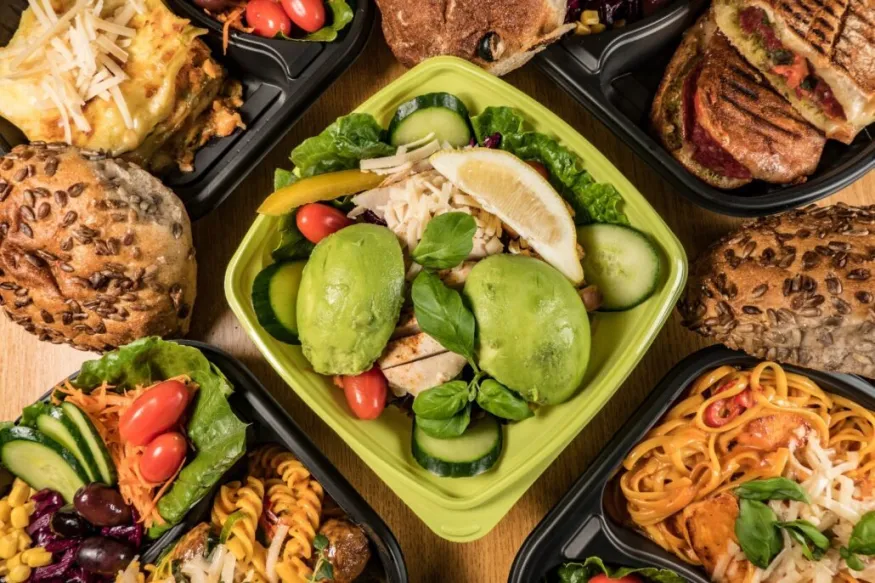
Eating healthy doesn’t have to be expensive. With some thoughtful planning and smart shopping, you can enjoy nutritious meals without straining your budget. Here’s how to make it work:
1. Set a Realistic Budget
Start by determining how much you can comfortably spend on groceries each week or month. Having a clear budget helps guide your shopping decisions and keeps you focused on what’s essential.
For a free legal consultation, call 800-562-9830
2. Plan Meals Around Sales and Discounts
Take advantage of weekly sales, discounts, and coupons from your local grocery stores. Planning your meals around these offers can reduce your grocery bill significantly.
- If chicken is on sale, you can make several meals, like grilled chicken salads, chicken stir-fry, and chicken soup.
3. Embrace Whole Foods
Whole foods like fruits, vegetables, grains, and legumes are often more affordable and nutritious than processed options. Seasonal produce is typically fresher and cheaper, making it a smart choice for your meals.
- Buy a bulk bag of oats instead of pre-packaged oatmeal packets, and add your toppings like fresh fruit or nuts.
Click to contact our disability lawyers today
4. Batch Cooking and Freezing
Prepare large quantities of food and freeze portions for later. This saves time and reduces waste. For example, cooking a big pot of chili or soup and freezing individual servings gives you quick, healthy meals for the week.
Complete a Free Case Evaluation form now
5. Get Creative with Leftovers
Instead of letting leftovers go to waste, turn them into new meals. For instance, roast a chicken for dinner and use the leftovers in a salad, wrap, or soup the next day.
- After enjoying a roast chicken, shred the leftovers and use them in a chicken salad sandwich or toss them into a stir-fry with vegetables.
6. Focus on Affordable Protein Sources
Protein is essential, but it doesn’t have to be pricey. Consider affordable options like eggs, beans, lentils, and canned tuna. These ingredients are versatile and can be used in various dishes.
- Cook a hearty lentil soup or a chickpea curry—both are budget-friendly and packed with protein.
7. Buy in Bulk
Purchase staple items like rice, pasta, oats, and beans in bulk to save money over time. Store them properly to avoid spoilage and enjoy the savings.
8. Stick to a Grocery List
Impulse buys can quickly add up, so it’s essential to stick to a grocery list. Plan your meals, write down all the ingredients you need, and avoid straying from the list to stay within your budget.
9. Cook at Home
Preparing meals at home is often cheaper than eating out, and it gives you control over the ingredients. Try simple, nutritious dishes like stir-fries, casseroles, or grain bowls.
- Instead of ordering takeout, make a stir-fry at home with leftover vegetables, a protein source like tofu or chicken, and a homemade sauce.
10. Incorporate Plant-Based Meals
Plant-based meals tend to be less expensive and can be very healthy. Consider adding more vegetarian or vegan dishes to your meal plan, as they often use affordable ingredients like beans, lentils, and vegetables.
- A black bean and sweet potato chili is filling, nutritious, and easy on the wallet.
11. Avoid Processed and Pre-Packaged Foods
Processed foods are usually more expensive and less healthy. By focusing on whole foods and cooking from scratch, you can save money and ensure your meals are more nutritious.
12. Shop Smart
Be strategic about where and how you shop. Farmers’ markets, discount stores, and ethnic grocery stores often have great deals on fresh produce and bulk items. Also, shopping during off-peak hours might offer discounts on perishable items nearing expiration.
- If you find a markdown on bananas that are slightly overripe, buy them and freeze for smoothies or use them to bake banana bread.
By using these strategies, eating healthy on a budget becomes not only feasible but also enjoyable. With a bit of planning and creativity, you can maintain a nutritious diet while keeping your grocery costs under control.
Call or text 800-562-9830 or complete a Free Case Evaluation form






